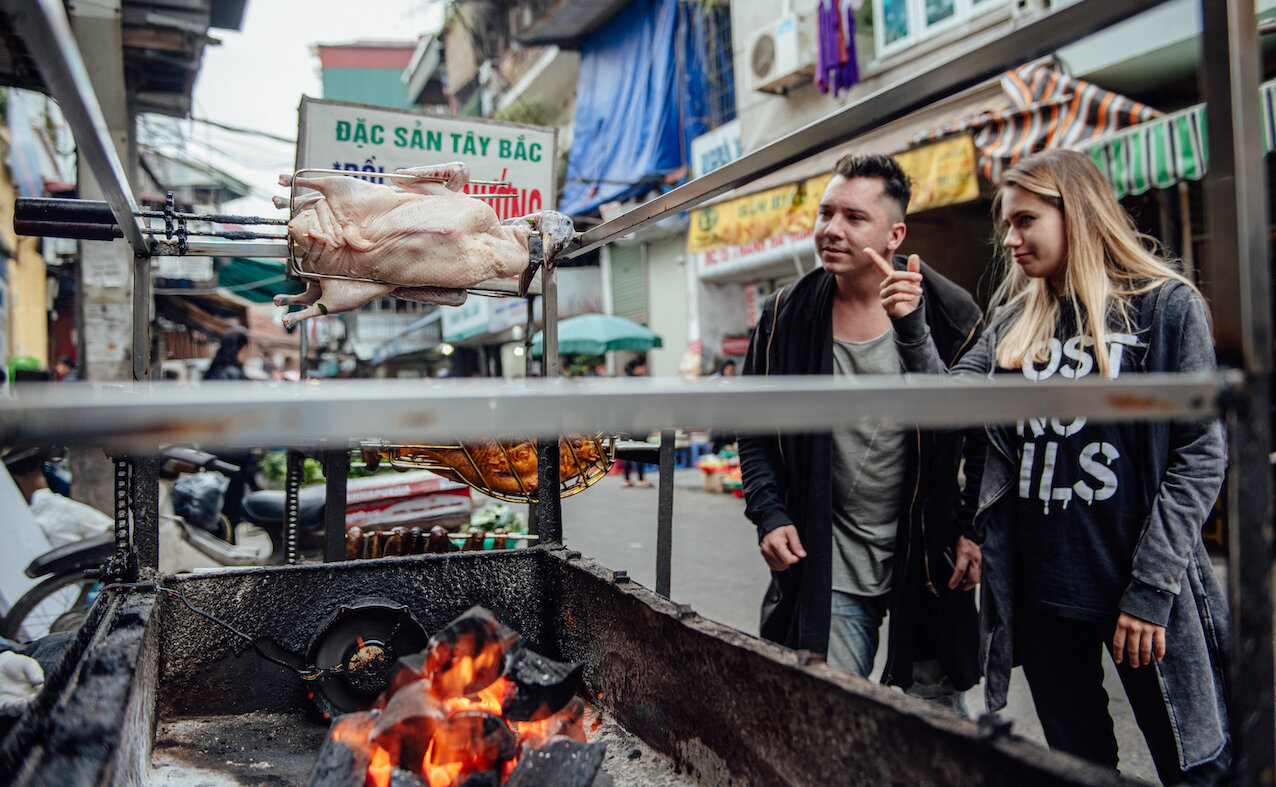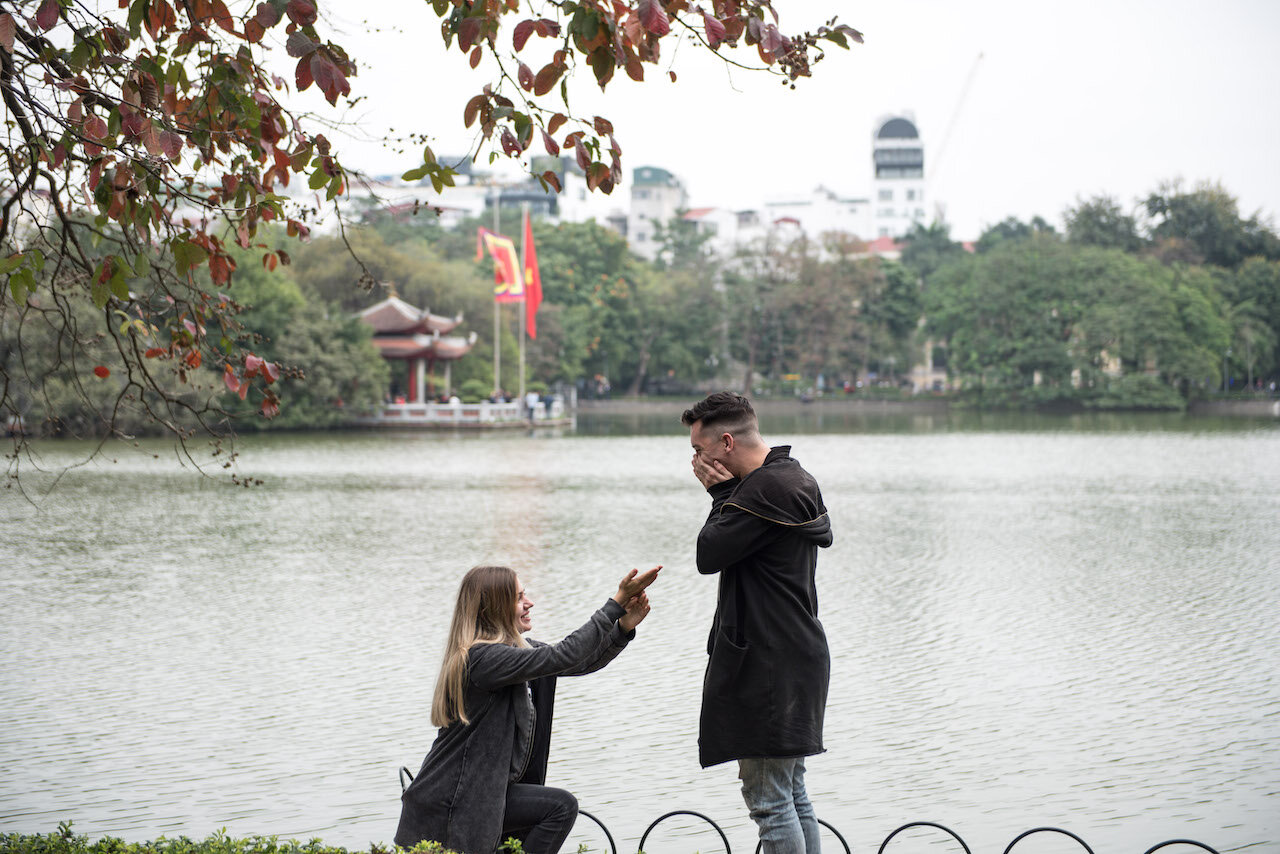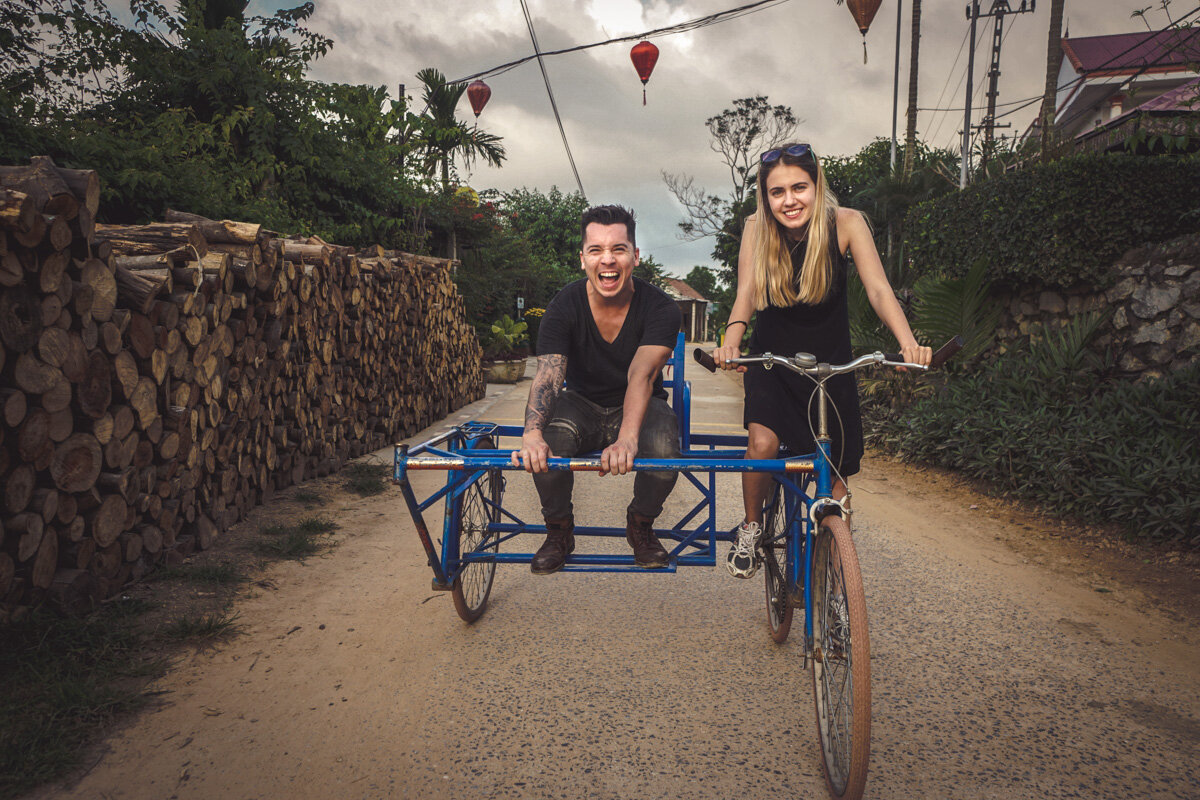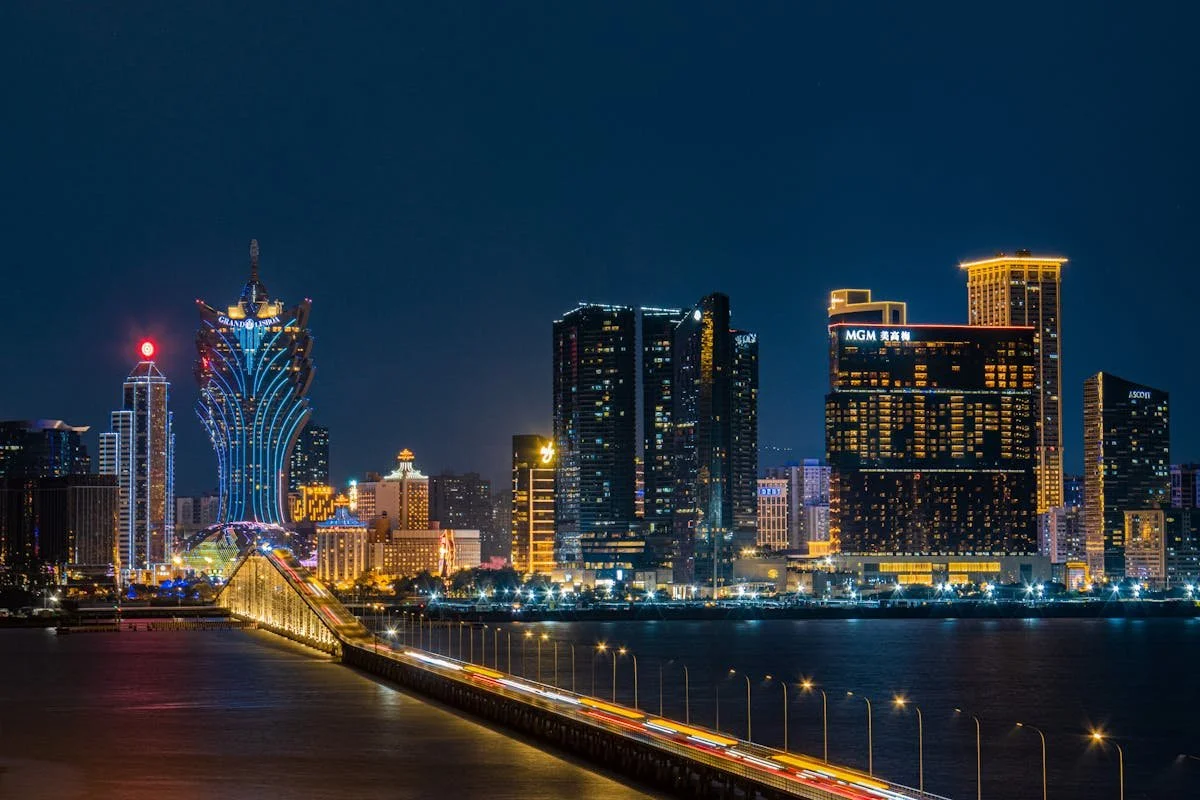Things to do in Hanoi, Vietnam
/Long Bien Bridge in Hanoi
Hanoi – is one of the major cities in Vietnam with a unique character where French, Chinese and Vietnamese traditions harmoniously coexist. Today Hanoi is a modern, developed, and boisterous city with a crazy rhythm of life, that has, however, retained its inextricable connection with the historical past.
In this article, we are going to cover the main sightseeing points and places of historical and architectural interest. Read further about food, coffee and fun things to do in Hanoi.
Most of Hanoi's sights are within the walking distance from Hoan Kiem Lake, and if you wish, you can explore all of them in one day. Some other attractions such as a mausoleum, several museums, and monuments are concentrated around Ba Dinh Square.
Of course, it will take at least a week to visit and explore versatile things to do in Hanoi such as museums filled with exhibits, many traditional architectural structures and temples, historical sites and simply beautiful parks of Vietnam’s capital.
However, travelers usually visit Hanoi as a stopover before going further to see the famous Halong Bay and Cat Ba or visit the mountainous village of Sapa. Most people stay in Hanoi for maximum 2-3 days if not less, so it’s important to carefully choose the sights for your Hanoi itinerary.
So if you are wondering what are the best things to do in Hanoi to squeeze in your 2 or 3-day itinerary, keep reading!
Table of Contents:
Where to stay in Hanoi? Best areas according to travelers
Before we dive into all the awesome things to do Hanoi, Vietnam, we’d like to give you some suggestions about the best areas to stay in the city.
Hostel - Little Charm Hostel - Hands down the best hostel you’ll find in and around this hectic city! With backpackers from all over the world and a friendly local but English speaking staff, you really can’t go wrong. They offer complimentary breakfast and coffee each morning, a free walking tour, food tour, swimming pool, and many other amenities that take it above and beyond! Beds are however $8-$9 a night!
Budget Hotel - Hanoi Panda Hotel - Can’t say enough good things about a place that costs $15 a night for a private room that’s just feet away from the bus stop that takes you too and form the airport. The staff here were friendly, the rooms were clean, and we found coffee, food, and bars right around the corner with ease.
Mid-Range Hotel - Vong Xua Hotel - We figured we needed to see different areas of the city instead of just staying in the old quarter zone the entire time. Alas, that what brought us to this gem just 3km south of the city center. But for $25 a night and only $1 or $2 to take a quick taxi ride it’s highly worth it! The rooms are elegant and clean, and some of the nicest and informative staff we’ve encountered in Hanoi.
Luxury Hotel - The Oriental Jade Hotel - FINALLY, a place where we’ve found complete western-style luxury for a beautiful price! For $150 a night you’ll immerse yourself into a lavish lifestyle from start to finish. Very professional and friendly staff, a rooftop pool, and a perfect central location to get to and from wherever it is you need to visit.
Places of architectural and historical interest in Hanoi
Hanoi Old Quarter
The Old Quarter is an unmissable part of any Hanoi itinerary and the hub for low-cost hotels, guesthouses, hostels, travel agencies, transport companies, restaurants, cafes, and night markets. This is by far the noisiest and the most hectic place in the city which has still preserved the atmosphere of old Hanoi and has also obtained its own modern features.
At the same time, the Old Quarter is also a kind of attraction that cannot be missed. Even if you are staying at a hotel outside of this area, you should definitely pay a visit here and take a walk along the narrow streets with all kinds of shops and a wide variety of foods.
Hanoi Old Quarter is referred to as “36 streets” because the district was founded by the representatives of 36 trade guilds in the 12th century. Its streets still bear the names of those goods that were sold here in the past: Copper, Silk, Silver, etc. The quarter is built up of old two-story houses with narrow facades which is characteristic of Vietnam's urban architecture of past centuries. Here, as before, people are trying to buy and sell everything in the world.
The Old Quarter area, strolling near the market
City’s largest covered market, Dong Xuan Market, is also located here, and in the evening, many night markets begin to work on the streets.
However, this area also has some unpleasant features: it is densely populated, the streets are narrow, the sidewalks are blocked by motorbikes, so you basically have to maneuver between them which is very difficult and even dangerous to move through due to the chaotic traffic.
The prices for goods and souvenirs are quite high, so you need to be able to bargain to buy something at an affordable price. In general, the Old Quarter is noisy, dirty and overwhelming. Love it or hate it, you simply cannot miss the historic Old Quarter off your list of what to do in Hanoi.
Old City Gates of Hanoi, the Old Quarter
Hoan Kiem lake
The bench jim and i had our first date
Hoan Kiem lake along with the sidewalks accessible for walking (that doesn’t happen too often) is a touristic center of the city, a landmark and a starting point for further exploration.
The Old Quarter is to the north of the lake, this is the area where most of the cheap hotels in Hanoi are concentrated.
In the evening you can take a walk around the lake along with other tourists from all over the world (it does get crowded) and watch the life of locals in Hanoi.
For the Hanoians, this is a popular place for evening relaxation and morning exercises.
Hoan Kiem is famous for the Jade Island that rests peacefully in the middle of the lake. The island is only accessible by the iconic Huc Bridge or Rising Sun Bridge and is home to Ngoc Son Temple.
2 year anniversary of being together
Hanoi Train Street
Next up for what to do in Hanoi, it’s time to get lost in the tiny streets of the city center such as Train Street.
Hanoi Train Street is a small section of the railway in the center of Hanoi where the train passes tightly sandwiched between the walls of old residential buildings.
This street made me wonder what is it like to live in conditions when trains pass under your windows all the time and between the railway and “street”, there are no safety barriers. Exits from the houses lead almost directly to the rails, right where the kids play when there is no train coming.
The authorities are planning to close down this street for safety reasons so hurry up to visit it “if” you still can.
West Lake
Okay, we’re kicking off our list of what to do in Hanoi with another big favorite, a visit to West Lake.
West Lake (Tay Ho) is the largest lake in Hanoi, located in the north-west of the city and covering an area of five hundred hectares.
There are many legends associated with this place but today Tay Ho is a large recreational area with gardens, parks and trees around it. The lake is popular with foreign ex-pats so the prices for hotels and food here are the highest in Hanoi. It’s so different from the Old Quarter, the streets are wider and the air is cleaner, here you can see a completely different aspect of Vietnam.
West Lake (Tay Ho)
Long Bien Bridge
Everyone knows about Gustav Eiffel who became world-famous by designing the Eiffel tower. This engineer specialized in the design of metal structures and his works can be found all over the world - from Peru and Panama to Vietnam.
We could not resist the pleasure of visiting another famous construction designed by the French engineer - the legendary Long Bien Bridge. More than 100 years ago, this bridge was the pride of Indochina and during the last war between Vietnam and the US - a symbol of courage.
Long Bien Bridge is one of five bridges across the Red River of Hanoi. However, it is the only bridge with unique historical and architectural significance. Today, the bridge is not only an important transportation hub but also a functioning historical relic of Vietnam.
If you like photography, visiting Long Bien Bridge should be on your Hanoi Itinerary. As you can see in the pictures…we had such a fun time having a photoshoot on the bridge.
Long Bien Bridge
Museums in Hanoi
There are several dozen museums in Hanoi but not all of them will be interesting for tourists. If you are looking for some non-touristy things to do in Hanoi, you might think that it is a good idea to visit small and lesser-known museums because they are off-the-beaten-path, however, note that you probably won’t understand anything because of the lack of information in English or other languages.
When considering what to do in Hanoi, know that the main rainy season runs in summer so you might want to have a list of museums to visit as a plan B.
Here are the most interesting museums to visit:
Vietnamese Women's Museum
If we had to choose only one museum for our Hanoi itinerary, we would go for this one. The exhibition opened in 1987 thanks to the initiative of the Union of Vietnamese Women.
In 2012 this completely unknown and previously unremarkable museum became to be the most visited in Hanoi, and according to the reviews of many tourists, it was the most interesting place among other attractions of Hanoi.
The collection is spread over four floors and consists of various exhibits telling about the life and fate of a woman starting from the most ancient times to the present. Items have been collected for over 10 years from all over the country. The main hall of the building is decorated with the statue “Mother of Vietnam” - a symbol of the museum. For unusual things to do in Hanoi, it definitely hits the spot.
Vietnamese Women's Museum
Hanoi Citadel or Imperial Citadel of Thang Long
Hanoi Citadel started to welcome visitors in 2010 and at once was included in the UNESCO World Heritage List. The territory of the complex is quite extensive and you can easily spend 3-4 hours there. Most of the museum exhibits are restored architectural structures that sit in the open air, but there are also several pavilions with exhibits.
Hoa Lo Prison Museum (Hanoi Hilton)
This prison, built by the French in the early 20th century, was primarily intended for political revolutionary-minded prisoners who were kept here in terrible conditions. A little later, during the war with the USA, American prisoners of war were kept here, in particular, pilots. Might be worth adding to your Hanoi itinerary especially if you like history and come from the US.
The interesting fact is that John McCain, the senator and presidential candidate, was held in this prison, and there is a separate exposition dedicated to this. In the 90s, the prison was finally closed and today only a small part of it has been turned into a museum. Exploring it is one of the most unique things to do in Hanoi for sure.
Hoa Lo Prison Museum
Hanoi Ancient House
In the old house-museum of Hanoi, they have recreated the atmosphere and life of the average Hanoi family with an above-average income in the late 19th - early 20th centuries. Here you can get acquainted with the completely unusual for Europeans setting in a two-story house, sandwiched in the cramped urban street of the old city. Hanoi Ancient House is high up the list of hidden things to do in Hanoi.
If you will do a walking tour of the old city, you can check it out. A visit will take 15-20 minutes.
Ho Chi Minh Museum
The shape of the museum building resembles a lotus flower, which symbolizes the noble character of Uncle Ho. The main hall contains more than two thousand documents, articles, photographs and exhibits illustrating not only the historical events that took place in the life of President Ho Chi Minh but also events that have taken place in the world since the end of the 19th century.
We can’t say that this is a must-see museum as not everyone might be interested in its exhibits. But if you are interested in Vietnam’s modern history and have a couple of hours of free time, then it's worth a visit.
Vietnam National Fine Arts Museum (Viet. Bao Tang My Thuat Viet Nam)
Okay, let’s lighten the mood with some artsy things to do in Hanoi.
Fine Arts Museum display only works of art selected by the party nomenclature of Vietnam. Do not be surprised if you do not find any information about the exhibits in English, everything here is only in Vietnamese. But generally, it’s not necessary as you will visually get acquainted with many interesting facts and fascinating stories about culture, ethnography and history of Vietnam.
The exhibitions are dedicated to the culture and life of ethnic minorities, unique finds from the Neolithic, Paleolithic and Bronze Age, the feudal period in the life of the country, outstanding works of ancient sculpture and folk painting, technological fine art, as well as the works of artists of the first half of the 20th century.
The museum is definitely worth a visit, but, unfortunately, taking photos and videos inside is prohibited.
Ho Chi Minh Mausoleum
The mausoleum is the place of eternal peace of the greatest leader of Vietnam - President Ho Chi Minh, or as he is sometimes called, Uncle Ho. As you probably already know, the major city in the South has been named Ho Chi Minh after this prominent leader. Anyone, including foreign tourists, can get inside the mausoleum for free and see the body of Ho Chi Minh.
But remembered that this place is very important and almost sacred for the Vietnamese. The rules inside are even stricter than when visiting temples: taking photos and video inside is forbidden, you should follow the route, you cannot carry bags (you leave them at the lockers), turn off your cell phone, and don’t dress as if you are going to the beach. There are always a lot of people who want to visit the mausoleum, so you have to wait in line and plan about 1 hour for the entire visit.
Ho Chi Minh Mausoleum
Temple of Literature
The Temple of Literature (Van Mieu) was built in 1070 by Emperor Li Nhan Tong in honor of Confucius and his followers, and six years after that it became the basis for the first Vietnamese university. This is definitely one of Hanoi's most famous attractions and is a must-see place.
It would not be fair to say that you will see some incredible buildings and statues, it’s the historical significance of this place that makes it a very worthy place to get acquainted with the history of the capital and Vietnam as a whole. By the way, you can see the Temple of Literature on a banknote of 10,000 vnd. It’s the first university in the whole country and hence why it’s made it onto our list of top things to do in Hanoi, Vietnam.
St Joseph's Cathedral
One of our favorites was St Joseph's Cathedral, it’s located in the center of the Old Quarter where you can take in some history if that’s on your list of what to do in Hanoi.
This Catholic neo-Gothic church was built in 1887 by the French and stands out from the general architectural chaos of Hanoi’s Old Quarter. From 1975 to 1985 the church was inactive and now is fully operational.
This place is most interesting to visit during the Christmas and New Year holidays when the square in front of the church turns into a carnival. At other times of the year, this is a rather quiet place where people come to take pictures.
St Joseph's Cathedral
One Pillar Pagoda
This is the oldest pagoda in Hanoi and the most important one. It was built in 1049 during the reign of Emperor Li Thai Tong. Originally it was a wooden structure on a wooden pillar in the middle of a tiny pond, but later it repeatedly lost the status of the main pagoda and was rebuilt. Its present appearance is the result of the restoration in the 1950s after the complete destruction by the French.
Despite the fame and significance, tourists have nothing to do here for more than 10 minutes, although you might want to see the unusual architecture with your own eyes.
Tran Quoc Pagoda
This 1400-year-old pagoda is considered to be the oldest in the city, its age is estimated at 1400 years. Of course, the current pagoda has almost nothing to do with the original buildings as it was completely rebuilt in 1842, nevertheless, it is one of the most sacred places among Buddhists in Hanoi. That is why this pagoda is visited by many high-ranking guests of the country. Tran Quoc Pagoda is popular with tourists so it can get crowded.
Now the best part - the entrance is free.
Tran Quoc Pagoda
Bach Ma Temple
This temple is very inconspicuous at first glance, yet it is the oldest one in the city. It was founded in the spring of 1010 by the emperor Li Thai To in honor of the white horse that brought him to this place.
During its existence, the temple was repeatedly damaged by floods and other natural disasters, therefore, in the 18th century it was seriously rebuilt, leaving almost no remnants of the old buildings.
Perfume Pagoda
60 kilometers southwest of Hanoi is a temple, called the Perfume Pagoda. This very sacred place for Buddhists is located 60 kilometers southwest of Hanoi. and in the period from the first to the third lunar months (usually from March to April) the so-called Perfume Pagoda Festival takes place here. At this time, thousands of Buddhist pilgrims rush to the temple.
The pagoda was built in the 15th century and in modern days there is already a whole complex of temples. The main pagoda is located in a mountain cave and is not so easy. Firstly, it is not directly accessible by road. You will need to take a boat from the pier that will take you a few kilometers by boat. When you get off the boat, you will need to take a short walk and then you will have an option to take a cable car to reach the pagoda or to climb the steps on foot.
This place is one of the most famous and popular religious attractions of Vietnam, the only downside is that you will have to spend nearly the whole day on this trip.
Luckily, religious temples in Vietnam don’t have a strict dress code like in Myanmar or Thailand.
All pictures featuring us are courtesy of Hanoi Photographer, Hoa Tran
Check out his work on Instagram, Facebook or his website Hoa Tran Photo.
Like it?! Pin it!

























